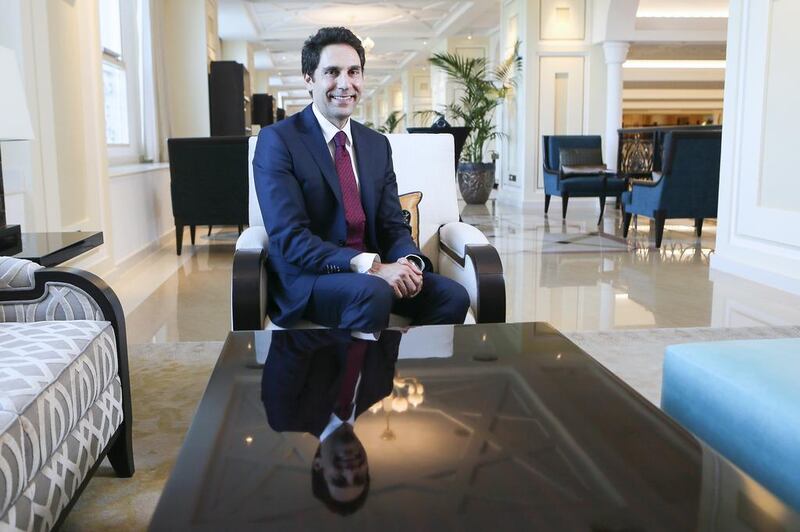There was mild outrage in the Twittersphere. “Since when did Ras Al Khaimah become part of Dubai?” demanded one post. “The travel agents are trying it on,” said another.
The Twitter chatter was prompted by a recent headline in a tourist trade magazine that had proclaimed “Dubai creates a new Ibiza-style party island” in describing Dream Island, a new destination that will accommodate 20,000 party goers, two “mega clubs”, five hotels and 100 restaurants.
A very Dubai concept, it must be admitted, except that the development in question was in RAK, an hour or so down the road.
In RAK, they seem not to mind being confused with the glittering sibling to the south, separated by 100 kilometres and two other emirates. Haitham Mattar, the chief executive of the RAK Tourism Development Authority, shrugs it off as a mixture of sloppy marketing by the travel companies, a bit of geographical ignorance, and a bonus for ‘his’ emirate.
“Being seen as an extension of Dubai is a compliment. To be associated with such a successful tourism development as Dubai can only be a good thing. Like the rest of the region, we look up to Dubai like you admire a successful elder brother,” he says.
But that will not stop him doing his job, which is to develop and market the tourist attractions of RAK for all they are worth. “We are still going to give RAK its own brand, and its own unique image,” he says.
The RAK image hitherto has been uncertain. Think RAK and you think: big ceramics factory, industrial zone, expansionist bank, Hajjar mountains and views of Iran. You do not immediately think “boutique emirate”, which is how Mr Mattar describes it.
“We are not competing with the other emirates and regional tourist centres that are catering for the masses. Sharm El Sheikh, Abu Dhabi, Doha and Dubai cater for the masses. We want to cater for people who want to get away from the buzz and have a complete break,” he says.
Affluent Abu Dhabi or glitzy Dubai catering for the masses? Surely not. But he explains carefully what he means: “Those destinations can accommodate all different sectors of the tourist industry, like conferences and exhibitions, retail tourism, beach resort and city breaks. RAK has to differentiate itself from this to some degree. We are about being upper market to luxury. We don’t have all that in place yet, but Rome wasn’t built in a day. We’re on a journey and we will get there.”
The “journey” at the moment is focusing on the Al Hamra development in RAK city with its associated hotels, residential, marina and retail facilities; and the nearby Al Marjan island development of reclaimed land and seafront development (where Dream Island is located).
Some big names of the hotel industry are or will be there: Hilton and its affiliates Doubletree and Waldorf Astoria, as well as Rixos, Banyan Tree and Marriott.
If there is a heavy Hilton flavour, it is no accident. After an MBA at Liverpool University – “there was a Marriott hotel across the road from the college and it fascinated me” – the Lebanese-born Mr Mattar worked for InterContinental Hotels Group before joining Hilton in 2011 as a regional head of sales based in Istanbul.
“I knew all about RAK from within the Hilton group, and when the Ruler approached me to head up the tourist industry here, it was a no brainer to work for an emirate that had such ambition, but wanted to do things in its own way,” he says.
The RAK way consists also of emphasising the things that make the emirate different. “RAK has a longer coastline than any other emirate, and because it’s nearer to the Straits of Hormuz it has different sand and the fish are different. Even the sand dunes are a different colour, and of course it has the Hajjar mountains.”
The hotel business has been affected in Dubai as Russians and other Europeans stay away, discouraged by the weakness of their relative currencies, but he says that in the first quarter of this year visitors were up 15 per cent, following on from big growth in last year from the Chinese, GCC and Indian markets.
The increase in guests per night, up 72 per cent last year, was especially gratifying, he says, indicating that more families were coming to RAK’s hotels.
The aim is to have 1 million visitors by 2018, compared with 750,000 who stayed in RAK hotels last year. By then, Mr Mattar hopes to have lured several new names, such as Crowne Plaza, Movenpick and Fairmont, to the emirate.
Most RAK tourists will get there via Dubai International Airport, and RAK already markets itself jointly with Emirates airline, but it has its own airport where Air Arabia operates and some European charters also fly.
From October, a deal with Qatar Airways becomes operational, allowing the carrier to fly from Doha direct to RAK, giving a further boost to the visitor numbers from a new hub.
Reeling off a list of ancient archaeological sites in RAK, many restored thanks to federal funds, Mr Mattar, for one, is convinced of the uniqueness of the emirate. But he makes the point too that “all the emirates are complementary destinations for each other”.
fkane@thenational.ae
Follow The National's Business section on Twitter






